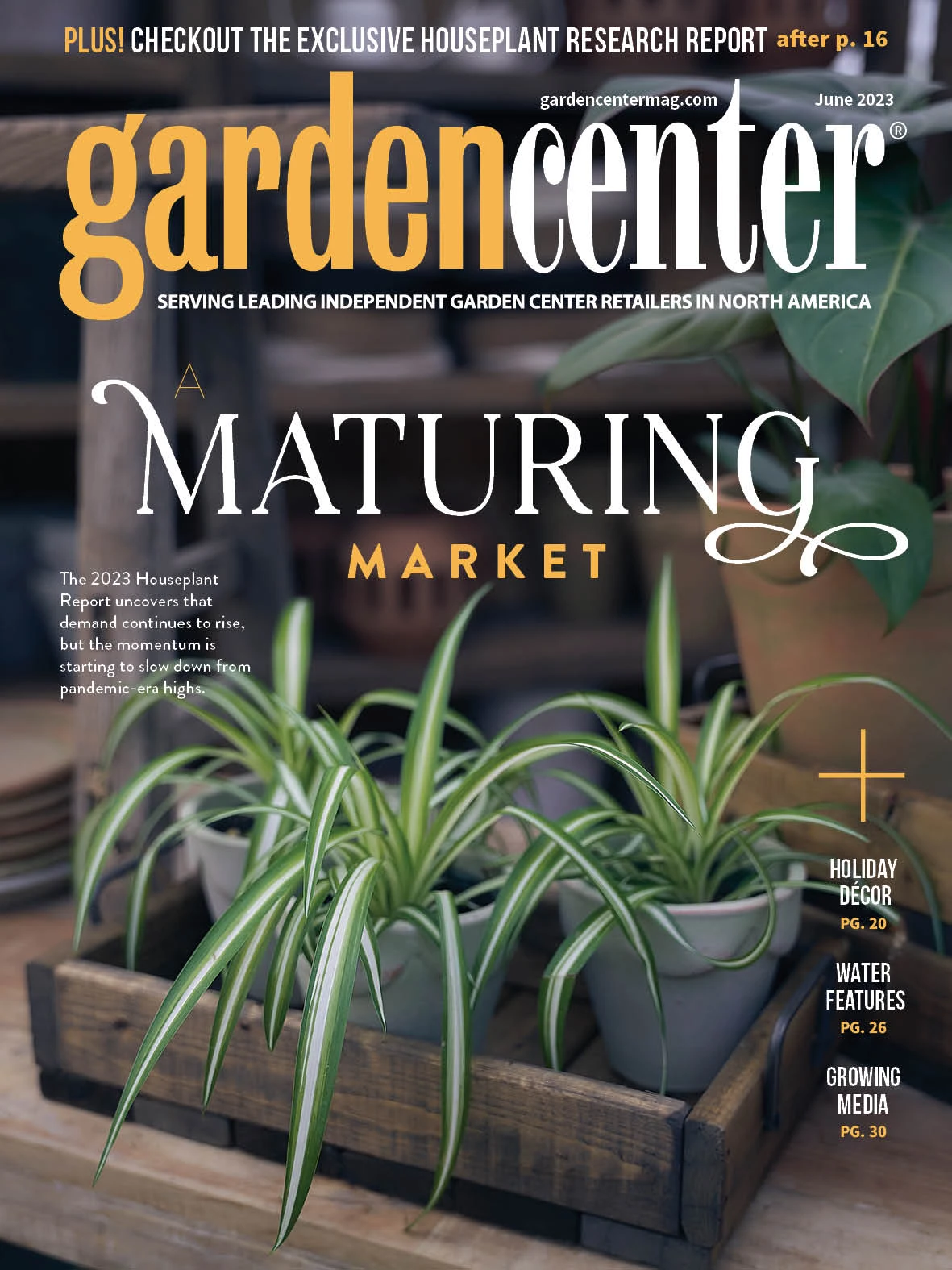

According to Ohio State University sustainable greenhouse and nursery specialist W. Garrett Owen, grower-retailers doing their own growing media trials is both doable and something they should do.
“It’s totally doable and it’s probably one of the things most recommended [to growers] before they make a switch with a substrate or a new mix,” Owen says. “This will give them, or their team of growers, an idea of how the substrate works, how it performs and how the plants perform and their cultural practices are needed, if any.”
He notes that they need a control (the substrate they are already using) to establish a baseline and he recommends growing one plant per pot, but grower-retailers should also consider trialing containers with combinations of plant material.
“Have at least six pots of each new substrate for each bedding plant species and cultivar,” he says. “Try to incorporate different container sizes too to see how it works with different pot filling machinery you have.” Here are five steps Owen recommends when embarking on an in-house growing media trial.
Step one: Know why
Owen says the first step is to know why a trial is being done in the first place.
“Is it because you’re not happy with the performance of your current mix or is it price-driven,” he says, noting that both are valid reasons for considering a switch. General plant performance, availability and sustainability are other common reasons for switching up growing media, Owen says.
Step two: Obtain the necessary materials
After figuring out your “why,” Owen says it’s important to look at products currently in use and find ones with a similar profile. For instance, if a grower-retailer is using peat-lite and is interested in wood fiber, then look for a new substrate that has wood fiber in it. Contact manufacturers to talk to a sales rep and/or a technical representative about trials.
“In some instances, they will provide some samples that you can physically see,” Owen says. “It may not be enough to produce a trial, but it’s a place to start.” Trade shows are other places growers can obtain samples, he says. Companies and university extensions can also help grower-retailers determine the size of a trial.
Step three: Setting up the trial properly
To get started on a trial, Owen says it’s vital to label or tag the containers clearly with the substrate and plant material.
“I know, in some instances, growers will create blocks of substrate treatments in a certain section of the greenhouse and not label everything or tag each container,” he says. “Overall, it’s about documentation. If you start off right, by documenting everything you’re doing and have someone dedicated to keeping track of what’s happening, you’re being dedicated to seeing if making the switch is the right decision.”
This goes hand-in-hand with getting the actual plant material in the greenhouse and setting parameters for the trial, he says. Blocking pots in the trial is usually an efficient way to organize it so irrigation will be more uniform.
They can also place properly labeled pots amid their non-trial plant material to see how a new mix or substrate performs within normal growing conditions and cultural practices.

Step four: Run the trial
When running the trial, Owen says proper data collection is a must.
“Know the actual start date of the trial,” he says. “In terms of knowing what substrates are being used and in what containers, label them and number them. So, for instance, you’ll know that substrate X is in containers 1-50, substrate Y is in 51-100. And I’d encourage growers to start off by using a 1-2 dilution test or saturated media extraction test so they have a baseline of what the pH and EC is of the substrate is prior to planting.” Owen says there is a free tool online at e-GRO’s fertdirtandsquirt.com that Owen and Dr. Brian Whipker from North Carolina State produced that shows growers how to do those kinds of sampling procedures. Substrate companies can help too, he says.
As the trial goes on, Owen says to monitor pH and EC weekly using the PourThru procedure. (The same resources mentioned above can help with those tests. A pH/EC meter is also recommended.) Monitoring light, temperature and what chemicals are used are noteworthy to document. A PGR drench, for instance, can be tested in a trial, but should be its own subgroup in the trial, Owen says.
He adds that grower-retailers should take photos when they do weekly testing so they can see a progression of plant growth as the trial goes on.
“They can take either a single plant photo or single and group shots so that they can refer back because they may not have time to take observational data and notes,” Owen says. “Growers are busy and they may forget to write down that leaves are turning yellow. Photos can help them jog their memory after the trial has been performed.”
Step five: Make an informed decision
When the trial is completed, Owen says to compile data collected (perhaps inputting it in Microsoft Excel and plotting it) and see how pH and EC levels varied over the course of the trial. That information, combined with staff observations, photos, product price information and other notes, is the best way to make the decision about whether to make a growing media switch.
“‘How does this actually compare to our control?’ is the question you have to ask at the end of the trial and how plant growth or finished plant quality compares,” Owen says.
“Look at the photos. See how your plants grew in the different substrates you trialed. Are they similar quality or superior to what you were growing before? And does it make sense financially after crunching the numbers? Line everything up at the end to make a choice.”
Get curated news on YOUR industry.
Enter your email to receive our newsletters.
Explore the June 2023 Issue
Check out more from this issue and find your next story to read.
Latest from Garden Center
- Society of American Florists accepting entries for 2025 Marketer of the Year Contest
- Sustainabloom launches Wholesale Nickel Program to support floriculture sustainability
- American Horticultural Society welcomes five new board members
- Color Orchids acquires Floricultura Pacific, becoming largest orchid supplier in U.S.
- American Floral Endowment establishes Demaree Family Floriculture Advancement Fund
- The Growth Industry Episode 3: Across the Pond with Neville Stein
- Proven Winners offers Certified Garden Center Training for staff education
- Digging In Association hosts inaugural Platinum Trowel Awards at winter conference





